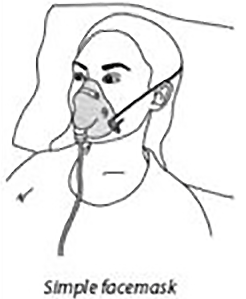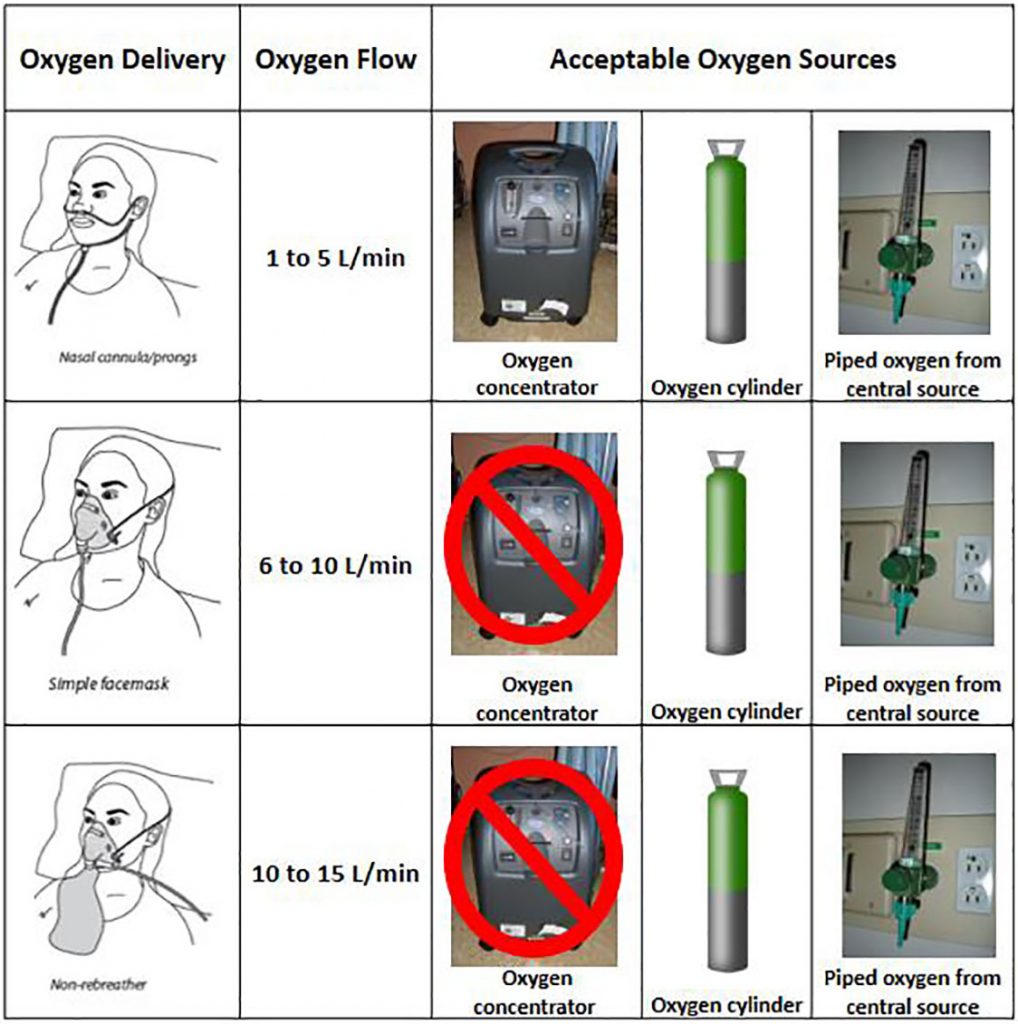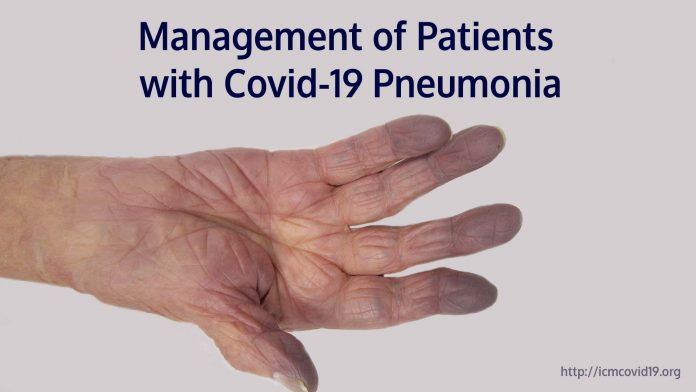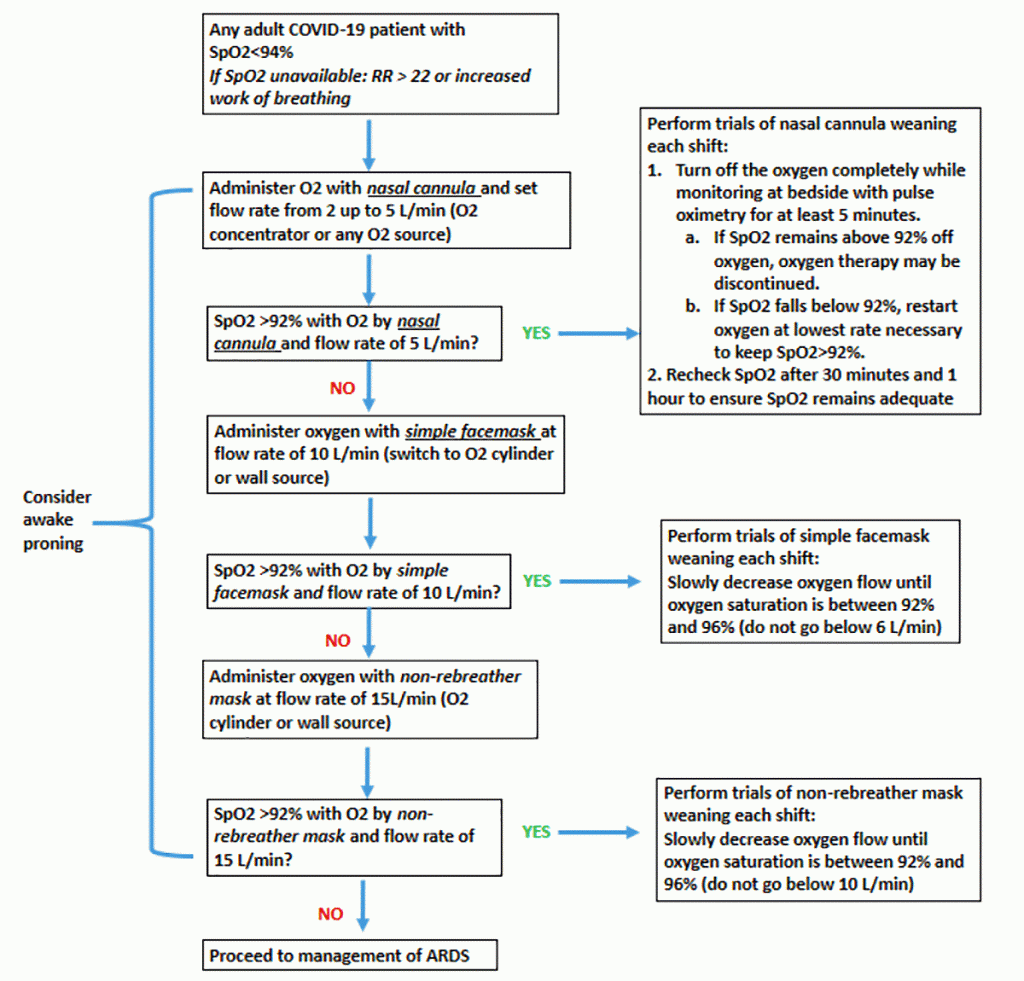Introduction
If the initial assessment shows that the patient has hypoxia, or a rapid respiratory rate, supplemental oxygen should be given with a goal to maintain the oxygen saturation (SpO2) at 92% to 96%.
Flow Diagram: Management of Oxygen in Patient with COVID-19 Pneumonia
A. Oxygen delivered by nasal cannula (at 2 to 5 L/min) FiO2 25-49%

B. If oxygen saturation remains <90% with O2 by nasal cannula at 5 L/m then administer oxygen with simple face mask (at 6-10 L/min) FiO2 40-60%

C. If oxygen saturation remains <90% with simple face mask, administer oxygen with non-rebreather face mask (at 10-15L/min) FiO2 60-95%

Oxygen delivery systems for different levels of flow

Oxygen weaning protocols
As the patient improves, they may be weaned off oxygen. For patients who are receiving oxygen by nasal cannula, trials of oxygen weaning should be done each shift.
- Turn off the oxygen completely while monitoring at the bedside with pulse oximetry for at least 5 minutes
- If oxygen saturation falls below clinical target (92% if no target specified), restart the oxygen at the lowest flow rate necessary to meet the patient’s clinical goal
- If the patient maintains saturations above clinical target without oxygen, oxygen therapy may be discontinued
- Monitor oxygen saturation 30 minutes later and then again at 1 hour to ensure saturation remains adequate without oxygen therapy
For patients who are stable and on simple face mask or non-rebreather, trials of oxygen weaning should be done each shift by slowly decreasing oxygen flow until oxygen saturation is between 92% to 96%.
High flow oxygen and non-invasive positive pressure ventilation (NIPPV)
- Non-invasive positive pressure ventilation (CPAP or BiPAP) is not recommended for coronavirus due to lack of demonstrated efficacy as well as the potential for pathogen transmission (there is a higher risk of aerosolisation of particles that can leak into the air around the mask)
- High flow oxygen can be considered in the situation of respiratory failure and no availability of invasive mechanical ventilation. Due to concerns about the risk of aerosolisation with high flow oxygen, airborne precautions should be instituted when it is used. Patients should wear a face mask over a high flow nasal cannula to reduce the risk of droplet spread
Sources & links
- Partners in Health | PIH_Guide_COVID_Part_II_Clinical_Management_6_1
- WHO | Clinical management of COVID-19 | Link
- James Heilman, MD | Featured image of cyanosis of the hand in someone with low oxygen saturations | CC BY-SA 3.0 | Link


